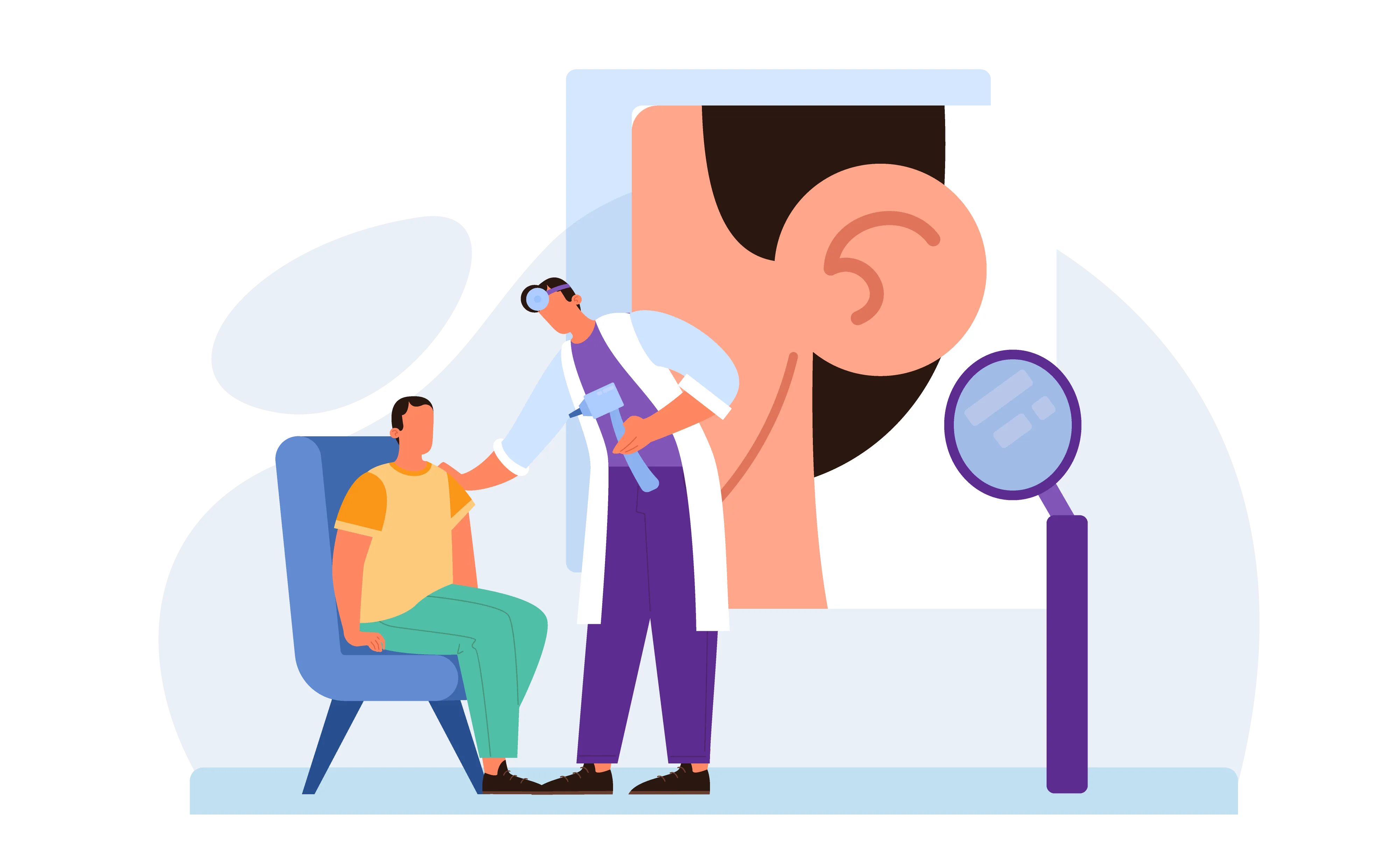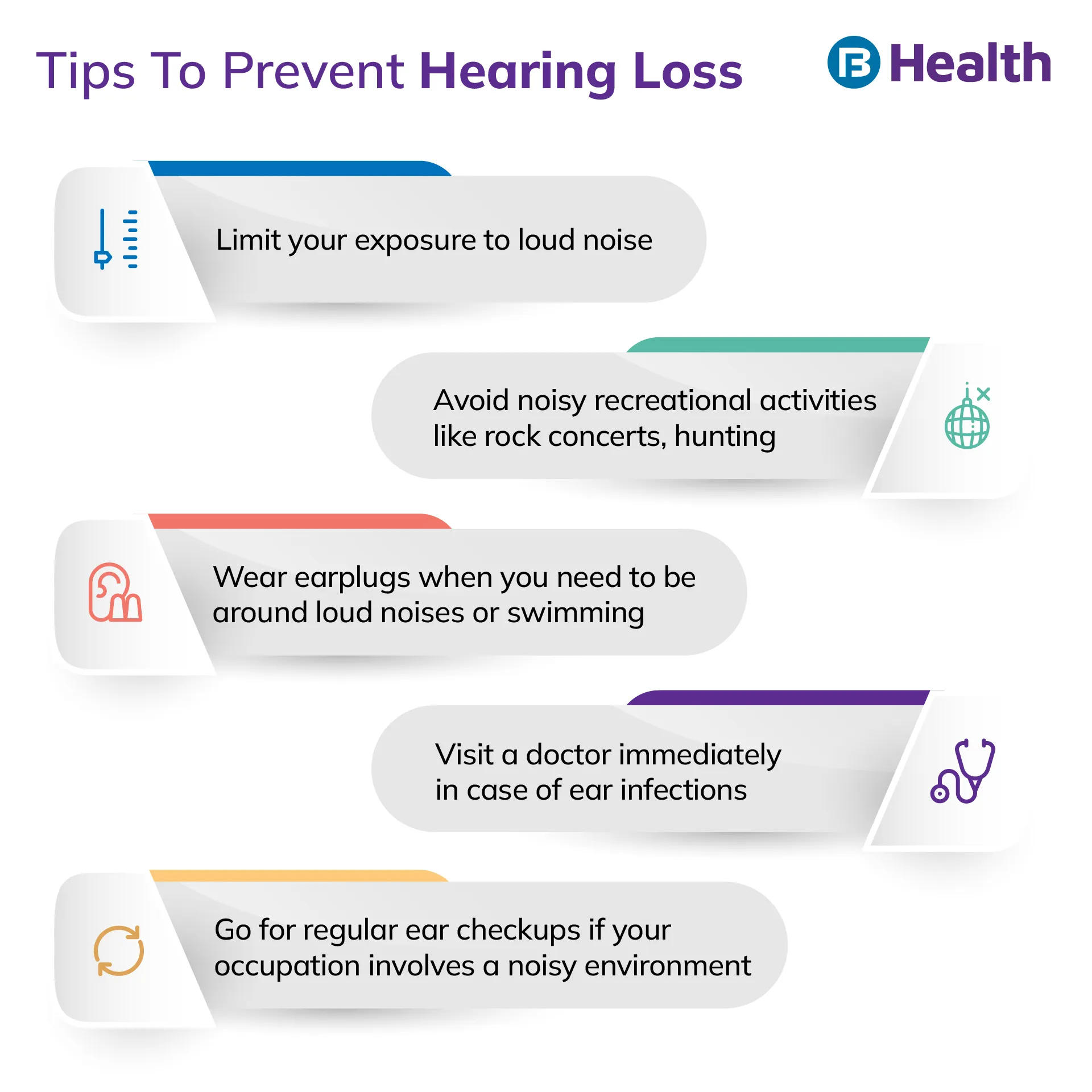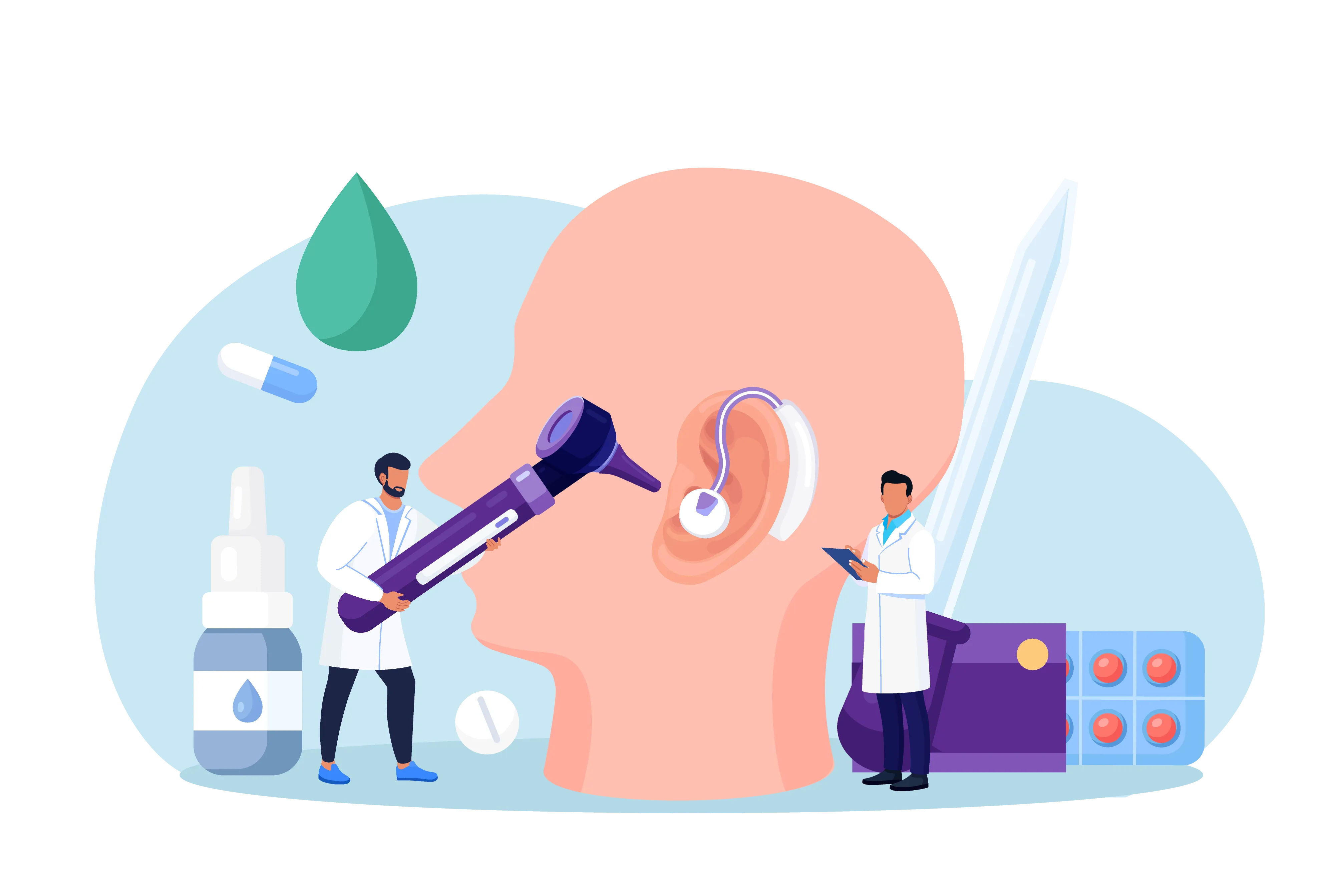Ent | 6 min read
Hearing Loss: Treatment, Diagnostic Tests and Prevention Tips
Medically reviewed by
- Table of Content
Synopsis
Hearing loss is a condition in which you are not able to hear through one or both ears. With the help of a hearing loss test, you can understand its cause and get the proper hearing loss treatment.
Key Takeaways
- Hearing loss occurs from birth, due to ear damage or as you age
- Whisper and tuning fork are a few examples of hearing loss tests
- Cochlear implants and hearing aids and help treat hearing problems
When you are unable to hear sounds completely or partially either in one or both ears, this condition is referred to as hearing loss. Be it hearing the unique sounds of nature or following an interesting series on TV, we often take our ability to hear for granted. That is why it is important for you to know that hearing loss develops gradually over a period and is not a spontaneous condition. If you experience hearing loss, you may find it hard to follow a conversation or listen to sounds. Hearing loss treatment include hearing aids, medical treatments and other options.
While hearing problems are common among the geriatric population, some individuals may experience congenital hearing loss. This is a type of hearing loss that is present right from birth. With proper hearing loss treatment, you can reduce or prevent your hearing problems.
Hearing loss is a condition wherein you may even face issues in understanding what the other person is trying to convey. This way, you may feel left out as you are unable to participate in conversations. This is why this condition can be challenging. If timely hearing loss treatment is not given, it can even affect your daily routine.
According to the WHO, if you are unable to hear anyone with normal hearing thresholds of 20dB or more either in one or both ears, you have hearing loss. Reports state that approximately 1.5 million people suffer from this globally [1]. In India, around 27,000 children are born every year with hearing problems. During a nationwide disability survey, hearing loss was identified as the second most common cause of disability in India [2].
With approximately 6.3% of Indians suffering from this condition, it is shocking to learn that most of this percentage includes children between 0-14 years of age. To create awareness of hearing problems among people, the Indian government has launched a National Programme for Prevention and Control of Deafness (NPCCD) [3].
Read on to get an in-depth understanding of hearing loss, its types, and hearing loss treatment methods.

Hearing Loss Types
Hearing loss can occur either in one ear or both ears. Depending on the part of the ear where damage occurs, you can categorize hearing loss into three types.
In the sensorineural type of hearing loss, your inner ear gets affected. The prime reasons for this type of hearing loss include factors such as:
- Age
- Deafening noises
- Any disease which affects ear functioning
This type of hearing loss is commonly seen in children due to congenital reasons or head injuries. Though such kinds of hearing problems are permanent, hearing aids can assist.
If you are suffering from the conductive type of hearing loss, you may notice that sound does not pass from your outer ear to the middle ear. This block can be due to fluid or earwax accumulation. In case of ear infections, you may face this type of sound block too. Hearing loss treatment methods, in this case, including taking medications or undergoing surgery in severe cases.
There is a third type of hearing loss in which you may experience sensorineural and conductive types. Known as the mixed type of hearing loss, this may be the result of head injury or genetics. You may have to undergo treatment for both types of hearing problems if this is the case.

Hearing Loss Causes
Your ear has three main parts, namely the inner, the middle, and the outer ear. When sound in the form of vibrations passes from the outer to middle and reaches the inner ear, nerve cells present in the inner ear translate these vibrations into electric signals. Finally, your brain converts these signals to the sound that you are able to hear. This is the normal working of your ear.
When your inner ear gets damaged either due to loud noise or age, there is no effective transmission of electric signals. This causes hearing loss. In case there is a buildup of earwax, your ear canal gets blocked. The inability of sound waves to travel causes hearing loss. Any rupture in your eardrum or tumor present in the ear can also result in hearing problems. With the help of hearing loss tests, your ENT specialist may be able to diagnose your condition better.
Additional read: All About CancerHearing Symptoms
Here are a few symptoms of hearing loss you need to note.
- Inability to participate in any conversation
- Difficulty in grasping words
- The problem with hearing consonant sounds
- Difficulty in hearing the TV or radio at a normal volume
- Presence of ringing sound in the ear
- Severe ear pain
- Inability to complete daily chores due to hearing problems
Hearing Loss Diagnostic Tests and Procedures
For diagnosing hearing loss, your doctor may conduct specific exams and assessments. Further, a physical examination may help reveal the underlying cause of hearing loss. You may have to undergo various hearing loss tests. In the whisper hearing loss test, your ability to understand sounds will be assessed. You’ll have to cover one ear at a time during this hearing loss test.
Another simple hearing loss test called the tuning fork test helps your doctor not only detect hearing loss but also helps him understand the site of damage. A few other hearing loss tests include:
- Audiometer tests
- Application-based tests to detect hearing problems
- MRI imaging test in case of tumor in the ear

Hearing Loss Treatment Techniques
Depending on the severity and reason of hearing loss, your doctor may suggest different options for hearing loss treatment. If hearing loss is due to the accumulation of ear wax, your doctor may remove it with the help of a suitable instrument. In case of inner ear damage, you may have to wear hearing aids so that you can hear properly. If hearing loss is extremely severe, your doctor may fix cochlear implants. In some hearing loss treatment techniques, surgery may help fix the problem, especially in the case of an abnormal eardrum.
Now that you are familiar with the different types of hearing loss and its causes keep a close watch on its warning signs and symptoms. If you have ear pain, tonsillitis, or any other problems related to your ear, nose, and throat, you may reach out to top ENT specialists on Bajaj Finserv Health. Book an online doctor consultation and resolve your queries from the comfort of your home. Further, you may meet the specialists via in-person consultation and take the required lab tests. Remember, health is wealth, and make sure not to overlook any issues, no matter how tiny they may seem! If you want to protect yourself from any disease, you can avail of health insurance.
- References
- https://www.who.int/health-topics/hearing-loss#tab=tab_1
- https://pubmed.ncbi.nlm.nih.gov/19852345/
- https://nhm.gov.in/index1.php?lang=1&level=2&sublinkid=1051&lid=606#:~:text=Back,at%206.3%25%20in%20Indian%20population.
- Disclaimer
Please note that this article is solely meant for informational purposes and Bajaj Finserv Health Limited (“BFHL”) does not shoulder any responsibility of the views/advice/information expressed/given by the writer/reviewer/originator. This article should not be considered as a substitute for any medical advice, diagnosis or treatment. Always consult with your trusted physician/qualified healthcare professional to evaluate your medical condition. The above article has been reviewed by a qualified doctor and BFHL is not responsible for any damages for any information or services provided by any third party.




